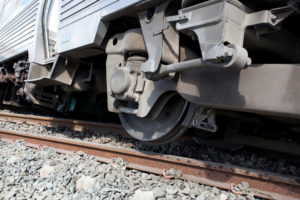My family spends a considerable amount of time in rural Dallas County, Alabama. It’s primarily farmland and timber land, interspersed with pockets of residences and small businesses. Walking through some timber property recently, I noticed the effects a recent controlled, or prescribed, burn had on a large stand of trees. As intended, only two to four feet of the tree trunks were scorched, all the shrubbery and underbrush reduced to ash. A sand burm and a burn break devoid of fuel for the fire, designed to contain the spread of the fire, encircled the swath of property within the burn. The team of individuals who conducted the burn waited years to do so – until the conditions on the property were ideal for a fire that they could start, control, and extinguish with ease.
Fire is a natural part of our environment.
For thousands of years, wildfires played an integral role in maintaining healthy ecosystems. Early in the last century, wildfires often burned, with rare exception, without devastating or widespread impact on people and their communities. As we increasingly inhabit areas prone to wildfires, we increase the risk of loss of life, property and natural resources. During the explosion of urban development over the past two decades, a rapid escalation of wildfires increased risk to responders, homes, properties and entire communities. Currently, nationwide, approximately 70,000 communities are estimated to be at risk from wildfires.
About 60% of the nation’s forested land is private and, in some areas, multi-jurisdictional. Roughly 75% of all wildfires reported to the National Interagency Coordination Center in Boise, Idaho, are under non-Federal jurisdictions (approximately 63,000 fires annually); and, according to NASF, more than 90% of these fires threaten structures.
The FLAME Act Report to Congress.
Wildfire prevention is a joint effort.
Wildfires tend to start and spread uncontrollably in dry, hot and windy weather, where ignition is easier, fuels are more quickly consumed, and fires burn at higher intensities. Steep slopes aid the speed with which wildfires spread, as do limited firefighting resources available to defend property and people at risk of harm. The government has come to realize the inability of individuals to manage these variables, and has formed an elaborate governance structure to supplement individuals’ efforts.
The 1995 Federal Wildland Fire Policy and Program Review was the nation’s first comprehensive study of wildfire issues, and was succeeded by the creation of the National Fire Plan in 2001. Congress passed the Federal Land Assistance, Management and Enhancement Act in 2009 (the FLAME Act), establishing separate funding for emergency wildfire suppression activities on Department of the Interior and National Forest System lands. In the spirit of the FLAME Act, the Wildland Fire Leadership Council, a consortium of Federal, state, tribal, county and local authorities, implements the National Fire Plan and National Fire Policy. These types of partnerships can treat more land, share costs and responsibilities, and reduce wildfire risks regardless of governmental jurisdictions.
Comprehensive planning results in safer communities. In densely populated states, like California and Florida, risk of wildfires have forced city planners to address hard questions about the nature and design of new development to decrease the vulnerability of those areas. The result is the development of best practices in design for wildfire hazard areas and comprehensive plan considerations for communities within those areas. These efforts include enactment of codes, regulations, standards and other devices to contain wildfires and protect lives and property.
Safety issues and health implications of wildfires:
The United States Centers for Disease Control and Prevention (the CDC) website features recommendations on decreasing health risks from smoke inhalation:
- Keep your campfire safe. Never walk away from a smoldering campfire. If it’s too hot to touch, or is glowing even slightly, it cannot be left unattended.
- Never park vehicles on dry vegetation. The exhaust system can get hot enough to start a fire.
- Comply with wildfire prevention regulations if you plan to burn trash or debris. Check with your local fire department to be sure the weather is safe enough for burning.
- Check local air quality reports. Listen and watch for news or health warnings about smoke. Find out if your community provides reports about the U.S. Environmental Protection Agency’s Air Quality Index (AQI). In addition, pay attention to public health messages about taking safety measures.
- Consult local visibility guides if they are available. Some communities have monitors that measure the amount of particles that are in the air. In the western part of the United States, some states and communities provide guidelines to help people determine if there are high levels of particulates in the air by how far they can see.
- Keep indoor air as clean as possible. If you are advised to stay indoors, keep windows and doors closed. Run an air conditioner if you have one, but keep the fresh-air intake closed and the filter clean to prevent outdoor smoke from getting inside. If you do not have an air conditioner and it is too warm to stay inside with the windows closed, seek shelter in a designated evacuation center or away from the affected area.
- Avoid activities that increase indoor pollution. Burning candles, fireplaces, or gas stoves can increase indoor pollution. Vacuuming stirs up particles already inside your home, contributing to indoor pollution. Smoking also puts even more pollution into the air.
- Follow the advice of your doctor or other healthcare provider about medicines and about your respiratory management plan if you have asthma or another lung disease. Consider evacuating the area if you are having trouble breathing. Call for further advice if your symptoms worsen.
- Do not rely on dust masks for protection. Paper “comfort” or “dust” masks commonly found at hardware stores are designed to trap large particles, such as sawdust. These masks will not protect your lungs from the small particles found in wildfire smoke.
- Evacuate from the path of wildfires. Listen to the news to learn about current evacuation orders. Follow the instructions of local officials about when and where to evacuate. Take only essential items with you. Follow designated evacuation routes (others may be blocked) and expect heavy traffic.
Who is at greatest risk from wildfire smoke?
- People who have heart or lung diseases, like congestive heart failure, angina, chronic obstructive pulmonary disease (including emphysema), or asthma, are at higher risk from wildfire smoke. In general, people with these conditions are at higher risk of having health problems than healthy people.
- Older adults are more likely to be affected by smoke. This may be due to their increased risk of heart and lung diseases.
- Children are more likely to be affected by health threats from smoke. Children’s airways are still developing and they breathe more air per pound of body weight than adults. In addition, children often spend more time outdoors engaged in activity and play.
###










Comments for this article are closed.